Philodendron Camposportoanum is a member of the Araceae family, a tropical perennial with a unique leaf configuration. Low maintenance, easy to care for, and a beautiful addition to your house plant collection.
Philodendron Campo is a small non-climbing plant with unique leaf colors and shapes. From the oval shape of the younger leaves to the three-lobed configuration that draws your attention, colors range from dark green to a pinkish hue.
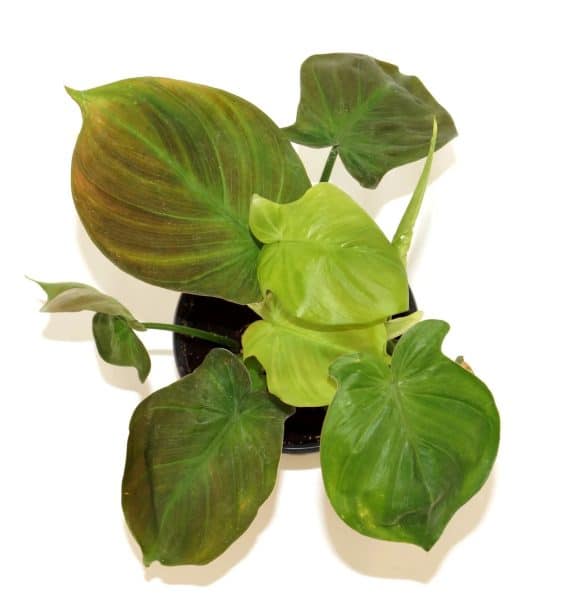
Described as heart-shaped or hammer-shaped, the mature leaf grows distinct back lobes that create a stunning show, while the different stages of leaf growth add varying splashes of color.
Considered rare and highly sought after as an indoor house plant, the Philodendron Camposportoanum originates in the tropical outdoors and can be grown in zones 9b – 11.
What to Know About the Philodendron Camposportoanum
Philodendron Camposportoanum is a member of the Araceae family found in the tropical forests of Brazil, Venezuela, and Colombia. A small non-climbing Philodendron with large velvety leaves, this plant is terrarium friendly but can be hung in baskets or trellised to show off its magnificent leaves.
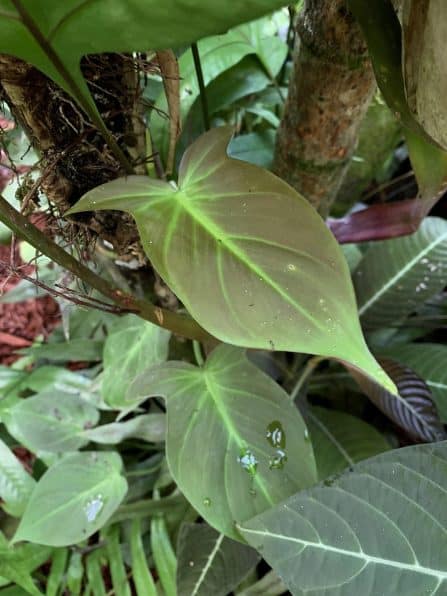
The leaves emerge from a central stem that can grow up to 3 feet tall, and although the height may differ under certain circumstances it is generally a smaller plant.
Philodendron Camposportoanum Plant Basics:
| Common Name: | Philodendron Campos |
| Botanical Name: | Philodendron Camposortoanum |
| Plant Type: | Tropical, perennial |
| Size: | Up to 3 feet tall |
| Light: | Bright, indirect sunlight |
| Soil: | Aerated and quick draining, pH of around 5.0-7.0. This is considered acidic to neutral. |
| Water: | Water when the top of the soil feels dry |
| Vulnerabilities: | Typical to house plants, overwatering, and common pests |
| USDA Growing Zones: | 9b – 11 but prefers a stable indoor climate |
How Do You Care for a Philodendron Camposportoanum Plant?
To care for Philodendron Camposportoanum, provide bright, indirect light and well-draining soil. Keep the soil moist, but not waterlogged. Mist the leaves frequently to maintain high humidity levels. Fertilize every two to three months with a balanced liquid fertilizer during the growing season.
Soil Needs
Soil can make or break a house plant and as forgiving as the family philodendron is, ideally the Philodendron “Campo” prefers a rich organic soil that is well draining. The soil should retain moisture but not to the point of being waterlogged, which can lead to root rot.
A good potting mix for Philodendron Camposportoanum should contain a mixture of peat moss, perlite, and vermiculite, along with some added bark or coconut coir to improve drainage. It’s important to ensure that the soil is not too compacted, as this can prevent air from circulating around the roots.
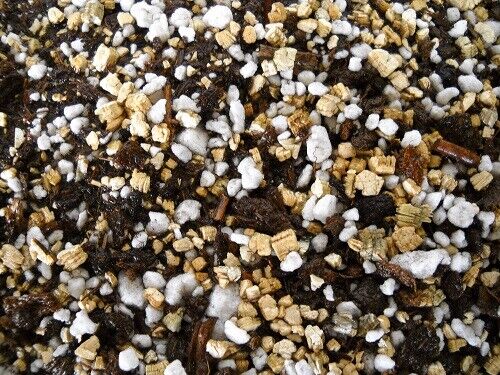
Tip: Use a pot that has holes in the bottom to keep the plant's root system from becoming waterlogged.
Water Needs
Philodendron Camposportoanum requires consistently moist but not waterlogged soil. It is important to water the plant thoroughly when the top inch of soil feels dry to the touch, but avoid over-watering as this can lead to root rot.
Philodendron Camposportoanum plant care differs during each of its growing seasons, especially when it's in reference to water needs. During the growing season (spring and summer), you may need to water your plants more frequently, depending on the temperature and humidity in your home. In general, it’s better to water less frequently but more thoroughly, rather than small amounts of water regularly.
In the plant's dormant period (fall and winter), you should reduce watering frequency and allow the soil to dry out a bit more between waterings. It is also important to avoid getting water on the leaves, as this can lead to fungal or bacterial diseases. Water directly at the base of the plant.
Light Needs
Philodendron Camposportoanum loves light, the brighter the better. But it needs to be indirect light. Direct sunlight can scorch its leaves, while too little light can result in poor growth and reduced foliage.
Place your plant in a location that receives bright, indirect light for most of the day, possibly a north-facing window or an east-facing window with a sheer curtain can be a good location for this plant.

You can tell if your plant is getting too much light because its leaves begin to turn yellow or brown. On the other hand, if the plant is not getting enough light its leaves will be smaller than usual, and it may need to be moved to a location with more light.
Philodendron Camposportoanum can tolerate lower light conditions, but this may result in slower growth and smaller leaves.
Temperature & Humidity needs
Philodendron Camposportoanum prefers warm temperatures and high humidity, and will thrive in temperatures between 18-27°C (65-80°F), but can tolerate temperatures as low as 15°C (59°F) and as high as 32°C (90°F) for short periods of time.
This particular plant requires high levels of moisture in the air. The relative humidity should be between 60-70%. In dry climates or during the winter months when indoor heating can lower humidity levels, you can increase humidity levels by using a humidifier, placing a tray of water near the plant, or by misting the plant.
* It needs to be noted that in some plants excessive amounts of water left on the leaves by misting or watering can cause fungus to form. Misting the air around the plants lightly is a better option.
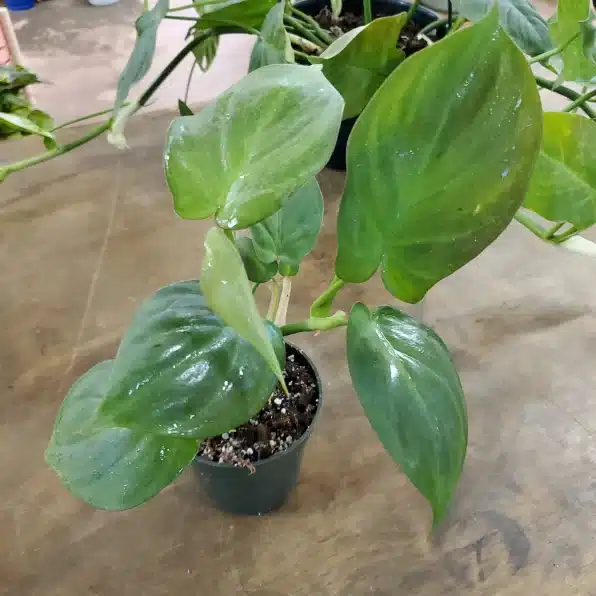
It’s also important to note that the Philodendron Camposportoanum is susceptible to sudden changes in its environment; consistency in temperature and humidity is recommended.
Fertilizing the Plant
Philodendron Camposportoanum benefits from regular fertilization during the growing season (spring and summer). A balanced, water-soluble fertilizer with an N-P-K ratio of 10-10-10 or 20-20-20 can be used every two to three months.
It is important to follow the instructions on the fertilizer package and to dilute the fertilizer to half or quarter strength before applying it to the plant. Over-fertilizing can lead to burn or damage to the plant's roots.
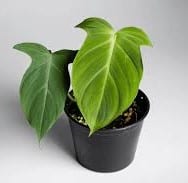
During the dormant season (fall and winter), fertilization should be reduced or stopped altogether. It’s a good idea during this time to flush the soil with water to prevent the buildup of salt and other minerals from the fertilizer. This can be done by watering the plant thoroughly and letting the water drain out of the bottom of the pot.
Philodendron Camposportoanum can also benefit from organic fertilizers, such as compost or worm castings. These fertilizers can be added to the soil or used as a top dressing. Adding the extra nitrogen gives your plant that little bit extra for producing bright green foliage.
Pruning Method
Pruning is an important aspect of maintaining the health and appearance of any plant, including Philodendron Camposportoanum. While this plant doesn't require frequent pruning, it may become necessary if the plant becomes too large or leggy.
If you do decide your Philodendron Camposportoanum needs pruning, you will want to do it correctly to avoid damaging the plant. One common method is to prune in the spring or summer by cutting an inch above a leaf node on mature stems. This will encourage new growth to come up from the base of the plant and help it maintain a bushy, full appearance.
If you notice any yellowing or dead leaves, you should remove them promptly to prevent the spread of disease and promote healthy growth. It's important to use sharp, clean pruning tools or scissors to avoid damaging the plant. It's often recommended to sanitize the tools between uses to prevent the spread of disease.
Propagation Method
Propagation is a way to create new plants for your collection, and the great news is that propagating a Philodendron Campo is relatively easy and can be done in two ways.
The first way is to use the stem cutting method. You start by selecting a 3-4 inch long section that has at least two leaves attached, Using a pair of clean and sharp pruning shears or scissors you will cut the stem just beneath the node and allow the cutting to callus over for a few days.
Once the cut edge has healed, you can plant the cutting into fresh soil, making sure that it's planted deeply enough to support the plant. Water the soil thoroughly and place the cutting in indirect light. With time and proper care, the cutting will root and begin to grow.
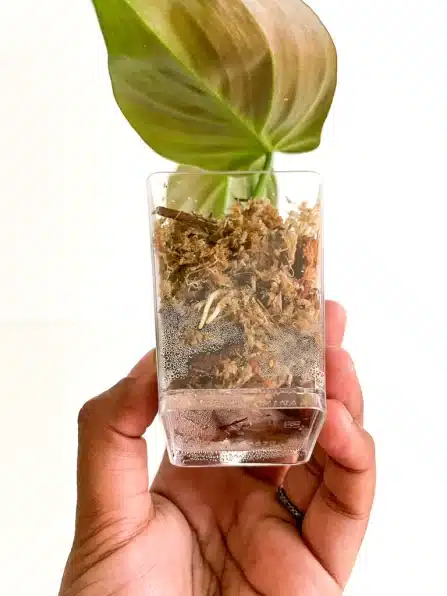
The second way you can propagate Philodendron Camposportoanum is through air layering. Air layering is a great way to create a new plant that is genetically identical to the parent plant, you will be creating a clone.
Air layering involves making a small cut in the stem of the parent plant, without severing it entirely. A rooting hormone can be applied to encourage root growth, along with a moistened growing medium placed over the cut. This will help stimulate root development. You wrap the new root area in plastic and wait for the roots to form. Once the roots have formed, you can cut away that section from the parent and plant it in fresh soil.
One of the benefits of air layering is that it allows the new plant to develop a strong root system while still attached to the parent plant, which can result in faster growth and a more robust plant overall.
Similar Varieties of Philodendron Camposportoanum
There are Philodendron varieties that share many similar traits and needs with Camposportoanum, including soil , water, fertilizer and propagation methods. It's a quick way to expand your collection and enjoy a variety of unique and beautiful house plants by learning about these Philodendron varieties.
Philodendron Lazorii: This variety has deep green, heart-shaped leaves with a matte texture and distinctive veining.
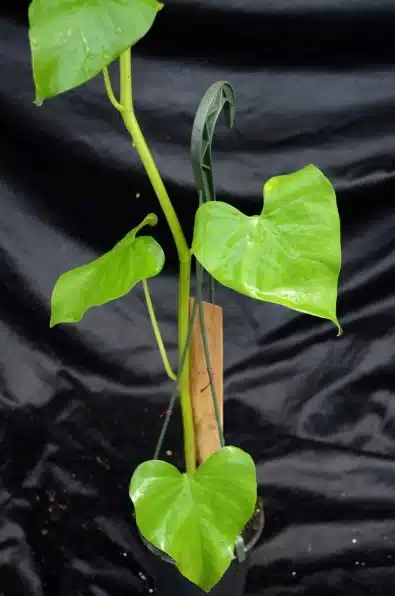
Philodendron Mamei: This is another variety that has large, glossy leaves with deep green coloring and a unique pattern of light green veins.
Philodendron Andreanum: A variety of Philodendron with bright green, heart-shaped leaves, a glossy texture and distinctive white veins.
Philodendron hederaceum (Heartleaf Philodendron): This is a popular trailing houseplant with heart-shaped leaves that come in a variety of colors and patterns.
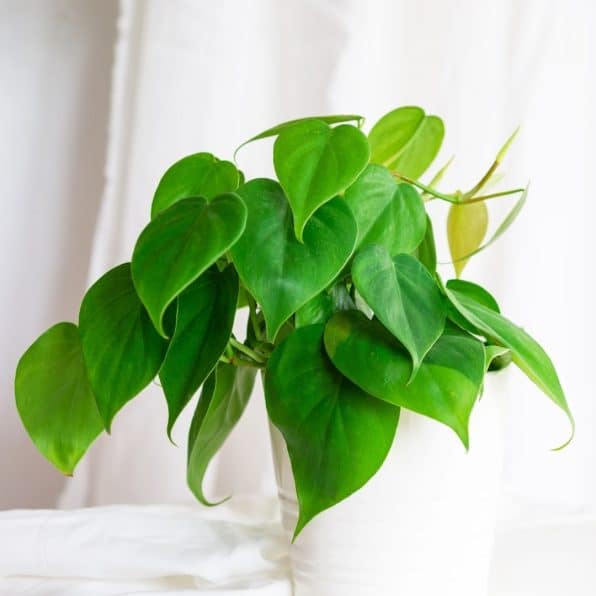
Philodendron birkin: This is a relatively new cultivar with striking white variegation on its dark green leaves.

Philodendron scandens (Sweetheart Plant): This is another trailing houseplant with heart-shaped leaves that are similar in shape and color to Philodendron Camposportoanum.
Philodendron micans: This is a popular houseplant with velvety, dark green leaves that have a reddish undertone.
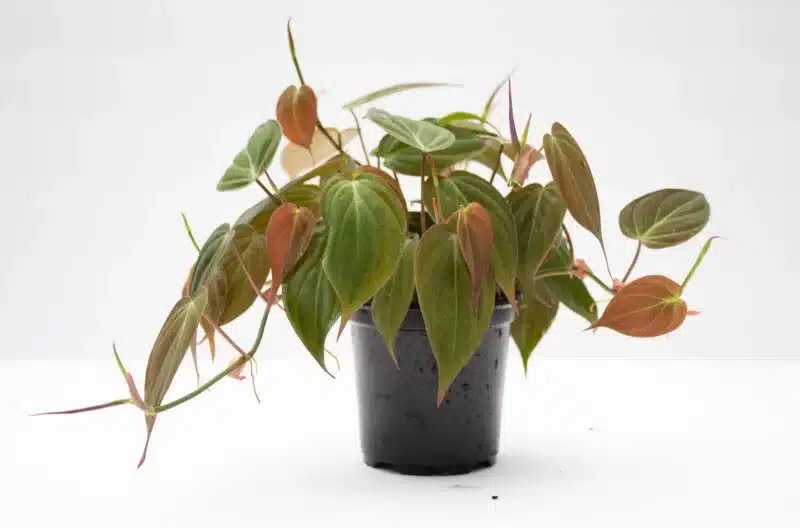
Philodendron selloum: This is a large, bushy house plant with glossy, deeply lobed leaves.
Common Problems with Philodendron Camposportoanum
Like other houseplants, Philodendron Camposportoanum can be susceptible to a few common problems. Here are a few of them:
Growing
Philodendron Camposportoanum is generally a hardy and low-maintenance plant, but like any houseplant, it can be susceptible to certain growing problems. One of the most common issues with this plant is overwatering, which can lead to root rot and other fungal diseases. To prevent overwatering, it is important to allow the soil to dry out partially between waterings and to avoid leaving the plant sitting in standing water.
Diseases
Philodendron Camposportoanum is a hardy plant that is generally resistant to most diseases, but there are a few issues that can arise. Some of these issues are:
- Bacterial Leaf Spot
- Blight
- Fungal Root Rot
philodendron-camposportoanum-bacteria.jpg
Pests
Like with any houseplant there is a chance that they can be attacked by pests.
Here are a few common pests that may affect this plant:
Spider mites: These tiny pests are common in warm, dry environments and can cause yellowing and webbing on the plant's leaves. To treat a spider mite infestation, wipe down the leaves with a damp cloth or spray them with insecticidal soap.
Mealybugs: These small, white insects can cause leaves to yellow and drop, and may also leave a sticky residue on the plant. Mealybugs can be treated with insecticidal soap or neem oil.
Scale insects: These small, armored insects can attach themselves to the leaves and stems of the plant and suck out its sap, causing yellowing and leaf drop. Scale insects can be treated with insecticidal soap or neem oil, or by manually removing them from the plant with a cotton swab.
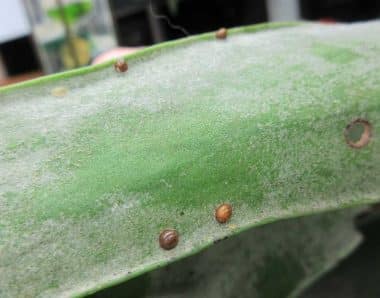
Healthy plants are less attractive to pests. It's important to regularly inspect your Philodendron Camposportoanum for any signs and to treat them promptly to prevent pests from becoming a problem.
FAQs
What is the Philodendron Camposportoanum common name?
The common name for Philodendron Camposportoanum is Philodendron Campos.
Is the Philodendron Camposportoanum rare?
It’s not considered one of the rarest philodendron varieties but it is considered rare.
What is the difference between Philodendron Micans and Camposportoanum plants?
The difference between the two will come down to the coloration of the leaves. Micans have a purplish sheen while the Camposportoanum has an orange-pink hue.
What is the price of a Camposportoanum Philodendron?
On average they range between $15 – $40. Cuttings will be in the lower range while some plants due to their size can run up to $50 or more if they are well established.
Where is the Philodendron Camposportoanum for sale?
Due to the popularity of this plant, it is available online as well as in nurseries or farms. Esty, Amazon, and other online outlets carry it. Due to the rarity of this particular Aroid it might not be at all big box nurseries, but it might be worth a look.

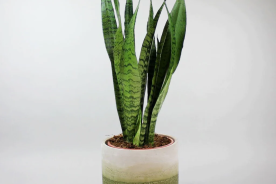
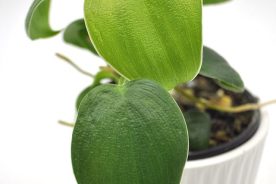
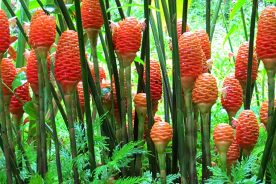

No Comments